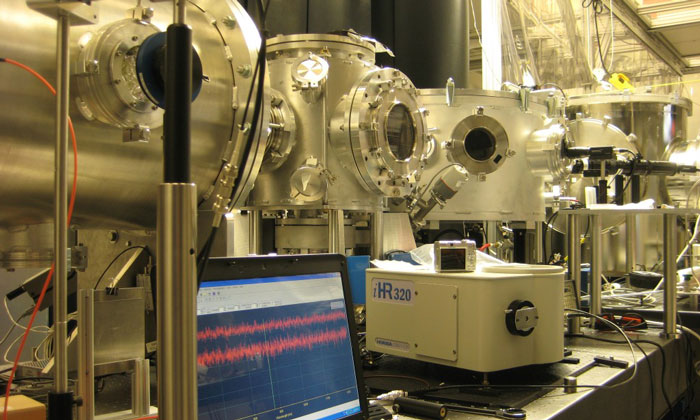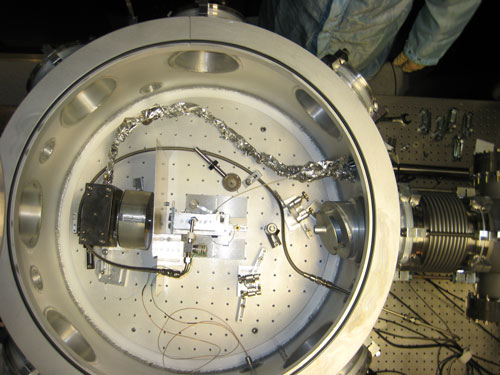Physicists at The University of Texas at Austin have built a tabletop particle accelerator that can generate energies and speeds previously reached only by major facilities that are hundreds of meters long and cost hundreds of millions of dollars to build.

“We have accelerated about half a billion electrons to 2 gigaelectronvolts over a distance of about 1 inch,” said Mike Downer, professor of physics in the College of Natural Sciences. “Until now that degree of energy and focus has required a conventional accelerator that stretches more than the length of two football fields. It’s a downsizing of a factor of approximately 10,000.”
The results, which were published this week in Nature Communications, mark a major milestone in the advance toward the day when multi-gigaelectronvolt (GeV) laser plasma accelerators are standard equipment in research laboratories around the world.
Downer said he expects 10 GeV accelerators of a few inches in length to be developed within the next few years, and he believes 20 GeV accelerators of similar size could be developed within a decade.
 A bird's eye view of the interior of the vacuum chamber in which the acceleration occurs. The laser beam arrives from the right. The gas cell, within which the acceleration of electrons occurs, is in the center of the chamber. The actual acceleration occurs over a distance of about an inch (for reference, the holes in the base of the chamber are 1.5 inches apart).
A bird's eye view of the interior of the vacuum chamber in which the acceleration occurs. The laser beam arrives from the right. The gas cell, within which the acceleration of electrons occurs, is in the center of the chamber. The actual acceleration occurs over a distance of about an inch (for reference, the holes in the base of the chamber are 1.5 inches apart).
Downer said that the electrons from the current 2 GeV accelerator can be converted into “hard” X-rays as bright as those from large-scale facilities. He believes that with further refinement they could even drive an X-ray free electron laser, the brightest X-ray source currently available to science.
A tabletop X-ray laser would be transformative for chemists and biologists, who could use the bright X-rays to study the molecular basis of matter and life with atomic precision, and femtosecond time resolution, without traveling to a large national facility.
“The X-rays we’ll be able to produce are of femtosecond duration, which is the time scale on which molecules vibrate and the fastest chemical reactions take place,” said Downer. “They will have the energy and brightness to enable us to see, for example, the atomic structure of single protein molecules in a living sample.”
To generate the energetic electrons capable of producing these X-rays, Downer and his colleagues employed an acceleration method known as laser-plasma acceleration. It involves firing a brief but intensely powerful laser pulse into a puff of gas.
“To a layman it looks like low technology,” said Downer. “All you do is make a little puff of gas with the right density and profile. The laser pulse comes in. It ionizes that gas and makes the plasma, but it also imprints structure in it. It separates electrons from the ion background and creates these enormous internal space-charge fields. Then the charged particles emerge right out of the plasma, get trapped in those fields, which are racing along at nearly the speed of light with that laser pulse, and accelerate in them.”
















